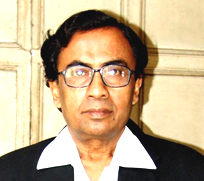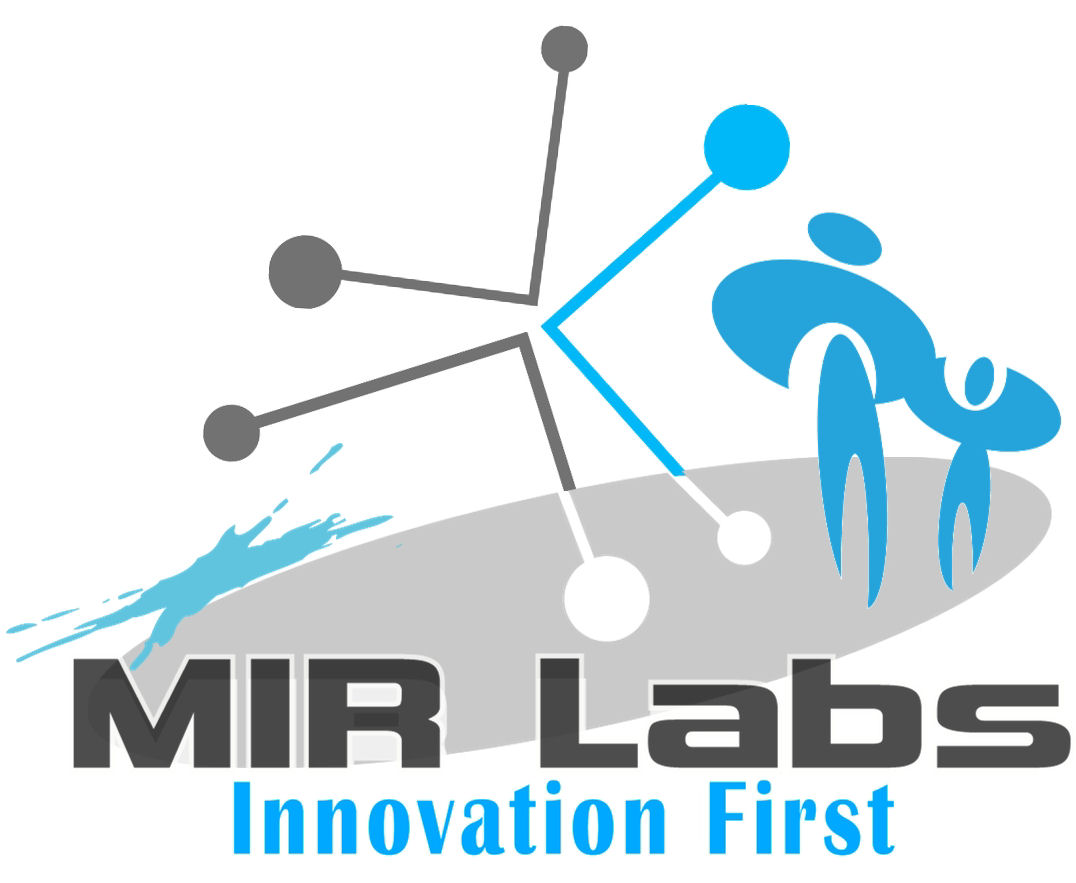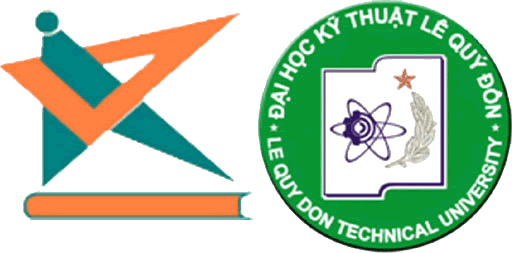Tutorials
1. Title of Tutorial/Special Session:
Introduction to Cryptography and Network Security
Dr. Asoke Nath
Associate Professor
Department of Computer Science
St. Xavier’s College(Autonomous)
30, Park Street
Kolkata
West Bengal
India
Abstract: The most challenging research area is now the data security in communication network. Due to rapid growth in internet technology now it quite easy for anyone to tamper the data or to extract data from anywhere even though are lot of software as well as hardware protection. This issue was not so prominent may be 15 years before from now and we were safe from any kind of data hacking. The security of data was not a major issue or problem but now it is a real challenge for the computer specialists. We have to impose security of data in the same organization at different levels also. So this is a big challenge to everyone of us. Now the time has come when person ‘A’ can trust person ‘B’ but can not trust person ‘C’. So the security of data is now a big question. The confidential data may not be sent from one computer to another computer in raw form as there is no guarantee that no intruder will intercept the data during transaction. There was a time when people were using hardly any e-mail but now almost everyone is using e-mail. So e-mail is one communication system where the hackers always try to hack data and to manipulate data or try to access the data from a remote machine. We prefer to send important information by e-mail from one person to another person. This is our fastest method to send data. But what is the guarantee that the data will not be modified or intercepted by some intruder or hacker? If the message is not encrypted then anytime the disaster may happen.
The confidential data should not be sent in unencrypted form as it may be intercepted by some hacker. The encryption should be done in such a way that the hacker can not apply any brute force method to retrieve the original data. e-Reservation, e-Banking and e-Business are now very important application of IT in communication network. While doing e-Reservation, e-banking or e-business the software designer should be very careful about security of input data and the output data. Under no circumstances the data may be tampered by any hacker. Cryptography is a subject which deals with how one can modify a readable text or any known object to unreadable text or document or some unknown object. In classical cryptography we have two types of distinct algorithms : (i) Encryption algorithm and (ii) Decryption algorithm. Encryption algorithm is used to make any readable format to unreadable format whereas the decryption algorithm does the reverse process that is from unreadable text back to readable text. The encryption or the decryption methods are of two types such as (i) Symmetric Key Cryptography where one key is used for encryption as well as decryption purpose which is also called the secret key and (ii) Public key cryptography where we use one key called public key for encryption purpose and another key called private key which is used for decryption purpose. The encryption key is distributed to all senders and the decryption key is distributed to the receiver only. In present tutorial we will try to discuss the various classical cryptography methods including some recent trends in symmetric key encryption methods. The authors will also discuss the public key cryptography including RSA algorithm. Finally the authors will also give a brief idea about quantum cryptography.
Objective: The main objective of the tutorial is to discuss and to implement some basic cryptography methods. The authors will discuss some very elementary methods of cryptography such as (i) Caeser Cipher method, (ii) Modified Caeser Cipher Method, (iii) Hill Cipher Method, (iv) Diffie hellman key exchange method, (v) Playfair method, (vi) Data Encryption Standard(DES) method, (vii)Advanced Encryption Standard(AES) method, (viii)Meheboob, Saima and Asoke(MSA) algorithm and some recent methods of symmetric key algorithm,(ix) DJSA method, (x) NJJSAA method, (xi) TTJSA method, (xii) DJSSA method, (xiii) DJMNA method, (xiv) Ultra Encryption Standard(UES), (xv) Bit Level Encryption Standar(BLES), (xvi)Modern Encryption Standard(MES) and also some public key algorithms such as (i) Rivest Shamir and Adleman(RSA) method. The authors will also discuss about (i) Message Digest, (ii) Digital Signatures,(iii)MD5, (iv)Secure Hash Algorithm, (v) Basics of Kerberos. At the end of the presentation the authors will give some live demonstration of some important cryptographic algorithms. The present tutorial will not help the beginners but also the experts in this field.
Intended audience:
The present Tutorial will cater three types of users:
- The users those who are expert in different fields but they want to know the encryption algorithms and in future they may apply in their research work. The following category users will be very much benefited. In fact these users will be the main target group in this particular tutorial.
- The users those who are expert in coding theory and cryptology they will also get some new information which will help in their future research work.
- There are many users in computers they mostly use the computer as an operator and they don’t have proper theoretical knowledge of computation. The present tutorial will also target those users. Even those who are non-computer professional they will also get some information which they may try to apply in their real professional lives.
Biography of the presenter:
 Dr. Asoke Nath is Associate Professor in Computer Science in St. Xavier’s College (Autonomous), Kolkata,India. Dr. Nath is presently working in the field of Cryptography, Steganography and Image processing. Recently Dr. Nath and his research group developed some new symmetric key algorithms called MSA, DJSA, DJSSA, NJJSAA ,TTJSA, DJMNA,UES,BLES, MES etc. Dr. Nath and his research group have developed some unique method to hide any encrypted message inside any kind of host file such as .EXE, .DOC, .PDF etc. Presently Dr. Nath and his group of researchers are engaged to develop some encryption method which will be the amalgamation of symmetric key and asymmetric key algorithms to make a cryptography system which may be almost unbreakable. Dr. Nath is also started to work on Quantum Cryptography. Dr. Nath attended various National and International conferences in recent past. He delivered papers in Woldcomp 2010, 2011 and 2012 at Las Vegas(USA). He has also delivered tutorial on “Introduction to cryptography” in Worldcomp 2011,2012 and 2013. Dr. Nath published more than 80 publications in International Journals, Proceedings of International Conferences and National Journals. He is a member of MIR Labs(USA), ACM.
Dr. Asoke Nath is Associate Professor in Computer Science in St. Xavier’s College (Autonomous), Kolkata,India. Dr. Nath is presently working in the field of Cryptography, Steganography and Image processing. Recently Dr. Nath and his research group developed some new symmetric key algorithms called MSA, DJSA, DJSSA, NJJSAA ,TTJSA, DJMNA,UES,BLES, MES etc. Dr. Nath and his research group have developed some unique method to hide any encrypted message inside any kind of host file such as .EXE, .DOC, .PDF etc. Presently Dr. Nath and his group of researchers are engaged to develop some encryption method which will be the amalgamation of symmetric key and asymmetric key algorithms to make a cryptography system which may be almost unbreakable. Dr. Nath is also started to work on Quantum Cryptography. Dr. Nath attended various National and International conferences in recent past. He delivered papers in Woldcomp 2010, 2011 and 2012 at Las Vegas(USA). He has also delivered tutorial on “Introduction to cryptography” in Worldcomp 2011,2012 and 2013. Dr. Nath published more than 80 publications in International Journals, Proceedings of International Conferences and National Journals. He is a member of MIR Labs(USA), ACM.
2. Title of Tutorial/Special Session:
Applying Information Technology to Container Ports - Where
Automation Technologies Meet Decision Sciences
Trung Thanh Nguyen
Liverpool Logistics Offshore and Marine Research Institute (LOOM)
School of Engineering, Technology and Maritime Operations
Liverpool John Moores University
James Parsons Building, Byrom Street, Liverpool,
United Kingdom, L3 3AF
The purpose of this talk is to raise awareness of the IT community on
logistics problems in container terminals, where 90% of world trade
goods are transported. Solving such logistics problems would
potentially save up to 50% of the cost that we have to spend on goods.
The talk will show how ICT techniques, especially the combination of
automation technologies with simulation/optimisation, can be used to
significantly improve the performance of container terminals. Some
case studies involving the process of developing an automated vehicle
(for transferring containers) and applying it to some European ports
will be presented. Here we will focus on how information technologies
and decision science have contributed in bringing this product from
the lab to the real environments.
The talk also attempts to attract audience’s attention on how the ICT
techniques used in container terminals can be applied to other
industries, and how IT solutions from other areas can be borrowed to
apply to container terminals.
Biography: Dr. Trung Thanh Nguyen is a Senior Lecturer in Simulation and Optimisation Modelling in Liverpool John Moores University. He has an international standing in operational research/dynamic optimisation and is very active in optimisation/simulation for logistics/transport. Over the last year he was the main author or main contributor of some top SCI journal papers (world-leading IEEE Transactions, Elsevier, Oxford journals) and four book chapters in this area. Also in this area, over the last year he has been invited to chair a leading conference track in the field (EvoSTOC 2014), to give a speech and a tutorial to two international conferences, to join an IEEE Task Force of leading experts, and to join the programme committees of the five leading conferences. Dr. Nguyen has received a number of grants and awards, such as four UK HE grants, two Vietnam National Foundation for Sci&Tech grants, two Vietnam industrial grants, a national prize for research, three outstanding research recognitions, and some travel grants.
3. Title of Tutorial/Special Session:
Quality of Service and Design Challenges in the Wireless sensor
communications networks
Vivek Deshpande
Dean (Research and Development)
MIT College of Engineering, Pune, India.
Abstract: Now-a-days Wireless Sensor Networks plays predominant role
in the communication domain. The data to be disseminated from multiple
sources to the destination base station or sink is having vital
significance. There are many problems with which data can be conveyed
up to the sink. The congestion, reliability, delay, fairness, etc. are
of main concern. These can be treated as Quality of Service parameters
that govern the performance of the WSN. Above all the Energy s
consumption is the main constrain for WSN node. It is very difficult
to obtain good QoS by keeping energy consumption low. Even if response
of one of QoS parameter will depends on the many other QoS parameters.
We have to take care of all QoS parameters to improve the performance
of the wireless sensor networks. This Quality of Services may improve
the application base of the WSN. With the QoS parameters the data
dissemination along with energy optimization is get affected. We have
to check the performance of the WSN against the QoS metrics for
different data inputs. This may contain the periodic- non periodic
data, event based data, transient or bursty data. For all these
different types of inputs data we are checking the performance of QoS
parameters like congestion, reliability and fairness. This may lead to
new researcher to verify their results and excel their research work
accordingly.
Biography: Vivek S. Deshpande, Dean, Research & Development, MIT
College of Engineering, India is doing a research in Wireless Sensor
Networks, embedded systems and High Performance Computer Networks.
Specific topics of interest and Research: Wireless sensor networks,
Body area networks, Quality of Service, Algorithm/Protocol
development, Mobile Communications and mobility in WSN, Wireless
Communications and networking in WSN, Information and Communications
technologies in WSN, Simulation, Modeling and analysis and performance
evaluations, Network management and services, Health care and home
networking, Reviews and Applications: Social, health, sports,
environmental, etc.
The Rs.15 lacks of funded project “Highway Traffic Monitoring Systems
(HTMS)” phase-I is done under his guidance. He guided the 10 person’s
team of technical researchers. The innovation of palm tops based on
Android ported on ARM is having great success of research project.
Many industries achieve huge success in their research and development
with the kind help of his technical consultancy.
His 20 years of teaching and industrial experience is an asset to the
organization. He is working as Associate Professor in Department of
Information Technology, His expertise in the field of Wireless
computer Networks and Distributed system helps in guidance to the PG
students.

"Neural network technologies in Russia in 1965 - 2013"
Alexander I. GALUSHKIN
Federal State Autonomous Research Institution "Centre of Information Technologies and Systems for Executive Power Authorities", Moscow, Russia,
Chief of the Laboratory "Intellectual information systems"
Chief of the IEEE Russian Section of Computational Intelligence Society Chapter,
Professor, Doctor of Science Engineering
Email: neurocomputer@yandex.ru
Abstract
The report contains the materials of research conducted in Russia in the field of neural networks and their applications in the period from 1965 to the present. The report describes the major publications in the field of neural network theory, neuromathematics, neurocontrol and their applications. The models of neuro-computers and efficient neural algorithms emulators developed over several decades and the prospects of these developments in the coming years are presented.
"The CMAC neural network and its modification in the pattern recognition, filling gaps in tables and other problems"
Eduard D. AVEDYAN
Federal State Autonomous Research Institution "Centre of Information Technologies and Systems for Executive Power Authorities", Moscow, Russia, avedian@mail.ru
Head Scientific Researcher of the Department for Special Projects Development,
Professor of Department IIST FREC of Moscow Institute of Physics & Technology,
Doctor of Science Engineering
Abstract
The short description and basic properties of CMAC neural network are given including the algorithm of the nonlinear transformation of the input vector, learning rule, basis functions and approximation capabilities. Three modifications of the CMAC NN are described. Two layer CMAC NN and CMAC NN with off-line learning LSQ-rule are designed to eliminate noise influence and mistakes in the teacher's instructions. The CMAC NN with the local approximation increases the accuracy in the case where the components of the input vector take continuous values. It is particularly important in the control systems in which the components of the state vector are continuous.
The comparative analysis of the application of the CMAC NN and its modification for solving problems of the pattern recognition and filling gaps in tables is given. This analysis is based primarily on the results of computer simulation. It is shown that the modifications of the CMAC NN solve these problems with a precision which in many cases is significantly greater compared with a precision that the classical neural network CMAC gives. In conclusion, the report is given to discuss the neural network approach to the problems where CMAC NN is especially effective.
Biography
Alexander Ivanovich Galushkin – Ph.D., Professor, Honored Scientist of Russian Federation, winner of the Russian Federation Government’ Prize. He was born on the 17th of February 1940, has finished the Chair “Automatic control systems” of the Moscow Higher Technical College named after N. Bauman in 1963. Prof. A.I. Galushkin is the author of more than 350 scientific works including 12 monographs published in Russia and abroad. Currently Prof. A.I. Galushkin is the Editor of the journal "Neural Technologies”, the member of the Editorial Board of the journals "Information Technology" and "Speech Technologies". Under the scientific supervision of Prof. A.I. Galushkin and under support of the Russian Foundation for Basic Research (RFBR) released a series of monographs “Neurocomputers and their applications". Currently, there were published over 30 books in these series. In 2007 the Publishing House Springer Verlag has published the monograph of Prof. A.I. Galushkin "Neural Networks Theory" in English, which contained the results of long-term author’s researches in the neural network theory field – the logical basis of building neurocomputers the fundamentally new in comparison with classical computing systems. During last 20 years the team led by Prof. A.I. Galushkin took an active part in many international conferences on high-performance PCs and neurocomputers: ICNN-91– Paris, 1st International conference on Neuromathematics (Rostov-on-Don) – 1992, ICNN-93 – Japan – 1993, 2nd International conference on Neuromathematics (Rostov-on-Don) – 1995,International conference on Microcircuitry of Neural Networks – Dresden, 1997, ICNN-99 – Washington, USA, ICNN-2000 – Como, Italy, ICONIP-2001 – Shanghai, ICONIP-2002 – Singapore, ICONIP-2002 – Singapore, ICNN-2003 – Portland, USA, 2003, ICNN-2004 – Budapest, Hungary, ICONIP-2004 – Calcutta, India, Artificial Neural Networks – Warsaw, Poland, 2005, ICNN-2006 – Vancouver, Canada, ICNN-2007 – Orlando, USA. At the conference ICNN’2007 in Orlando (USA) it was organized the Special Section for presentation of Prof. A.I. Galushkin’s Scientific school. A.I. Galushkin is the Senior Member of IEEE Computational Intelligence Society, now he is the Head of the Russian Section of this Society where he has organized a several conferences on different problems of intelligent information processing.


